2-(DIFLUOROMETHOXY)BENZALDEHYDE
- CAS NO.:71653-64-0
- Empirical Formula: C8H6F2O2
- Molecular Weight: 172.13
- MDL number: MFCD00042251
- SAFETY DATA SHEET (SDS)
- Update Date: 2023-04-23 13:52:06

What is 2-(DIFLUOROMETHOXY)BENZALDEHYDE?
The Uses of 2-(DIFLUOROMETHOXY)BENZALDEHYDE
2-(Difluoromethoxy)benzaldehyde is an important raw material used as an intermediate in the preparation of pharmaceuticals, agrochemicals, and dyestuffs. It is also involved in the preparation of 4-(2-difluoromethoxyphenyl)- substituted 1,4-dihydropyridine 3,5-diesters.
The Uses of 2-(DIFLUOROMETHOXY)BENZALDEHYDE
2-(Difluoromethoxy)benzaldehyde may be used as a starting reagent in the synthesis of the following compounds:
- 2-[2-(difluoromethoxy)benzylidene]methyl acetoacetate
- 3-(2-cyanoethyl) 5-(2-propoxyethyl) 4-[2-(difluoromethoxy)phenyl]-2,6-dimethyl-1,4-dihydro-3,5-pyridinedicarboxylate
- 2-propoxyethyl 5-cyano-4-[2-(difluoromethoxy)phenyl]-2-methyl-6-thioxo-1,4,5,6-tetrahydropyridine-3-carboxylate
- methyl 5-cyano-4-(2-difluoromethoxyphenyl)-2-methyl-6-thioxo-1,4,5,6-tetrahydropyridine-3-carboxylate
General Description
2-(Difluoromethoxy)benzaldehyde is an ortho-difluoromethoxy substituted benzaldehyde.
Properties of 2-(DIFLUOROMETHOXY)BENZALDEHYDE
| Boiling point: | 216 °C (lit.) |
| Density | 1.3 g/mL at 25 °C (lit.) |
| refractive index | n |
| Flash point: | 224 °F |
| storage temp. | under inert gas (nitrogen or Argon) at 2–8 °C |
| solubility | Miscible with 2-propanol and acetic acid. |
| form | clear liquid |
| color | Colorless to Light yellow to Light orange |
| Sensitive | Air Sensitive |
| BRN | 389068 |
| CAS DataBase Reference | 71653-64-0(CAS DataBase Reference) |
Safety information for 2-(DIFLUOROMETHOXY)BENZALDEHYDE
| Signal word | Warning |
| Pictogram(s) |
 Exclamation Mark Irritant GHS07 |
| GHS Hazard Statements |
H315:Skin corrosion/irritation H319:Serious eye damage/eye irritation H335:Specific target organ toxicity, single exposure;Respiratory tract irritation |
| Precautionary Statement Codes |
P261:Avoid breathing dust/fume/gas/mist/vapours/spray. P304+P340:IF INHALED: Remove victim to fresh air and Keep at rest in a position comfortable for breathing. P305+P351+P338:IF IN EYES: Rinse cautiously with water for several minutes. Remove contact lenses, if present and easy to do. Continuerinsing. P405:Store locked up. |
Computed Descriptors for 2-(DIFLUOROMETHOXY)BENZALDEHYDE
New Products
Tert-butyl bis(2-chloroethyl)carbamate 4-Methylphenylacetic acid N-Boc-D-alaninol N-BOC-D/L-ALANINOL 3-Morpholino-1-(4-nitrophenyl)-5,6-dihydropyridin- 2(1H)-one Furan-2,5-Dicarboxylic Acid Tropic acid 1,1’-CARBONYLDIIMIDAZOLE DIETHYL AMINOMALONATE HYDROCHLORIDE R-2-BENZYLOXY PROPIONIC ACID 1,1’-CARBONYLDI (1,2-4 TRIAZOLE) N-METHYL INDAZOLE-3-CARBOXYLIC ACID (2-Hydroxyphenyl)acetonitrile 4-Bromopyrazole 5-BROMO-2CYANO PYRIDINE 5,6-Dimethoxyindanone 5-broMo-2-chloro-N-cyclopentylpyriMidin-4-aMine 2-(Cyanocyclohexyl)acetic acid 4-methoxy-3,5-dinitropyridine 2-aminopropyl benzoate hydrochloride 1-(4-(aminomethyl)benzyl)urea hydrochloride diethyl 2-(2-((tertbutoxycarbonyl)amino) ethyl)malonate tert-butyl 4- (ureidomethyl)benzylcarbamate Ethyl-2-chloro((4-methoxyphenyl)hydrazono)acetateRelated products of tetrahydrofuran
![[2-(TRIFLUOROMETHOXY)PHENYL][4-(TRIFLUOROMETHOXY)PHENYL]METHANONE](https://img.chemicalbook.in/CAS/GIF/98566-94-0.gif)
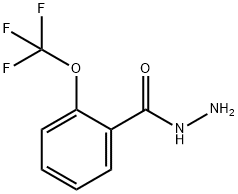
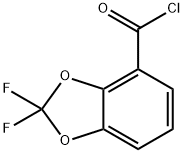

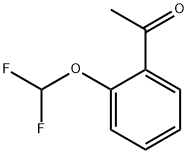
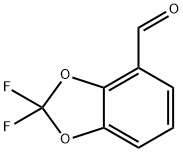
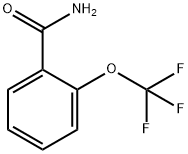

You may like
-
 2-(Difluoromethoxy)benzaldehyde CAS 71653-64-0View Details
2-(Difluoromethoxy)benzaldehyde CAS 71653-64-0View Details
71653-64-0 -
 1975-50-4 98%View Details
1975-50-4 98%View Details
1975-50-4 -
 2-HYDROXY BENZYL ALCOHOL 98%View Details
2-HYDROXY BENZYL ALCOHOL 98%View Details
90-01-7 -
 2-Chloro-1,3-Bis(Dimethylamino)Trimethinium Hexafluorophosphate 221615-75-4 98%View Details
2-Chloro-1,3-Bis(Dimethylamino)Trimethinium Hexafluorophosphate 221615-75-4 98%View Details
221615-75-4 -
 61397-56-6 CIS BROMO BENZOATE 98%View Details
61397-56-6 CIS BROMO BENZOATE 98%View Details
61397-56-6 -
 14714-50-2 (2-Hydroxyphenyl)acetonitrile 98+View Details
14714-50-2 (2-Hydroxyphenyl)acetonitrile 98+View Details
14714-50-2 -
 118753-70-1 98+View Details
118753-70-1 98+View Details
118753-70-1 -
 733039-20-8 5-broMo-2-chloro-N-cyclopentylpyriMidin-4-aMine 98+View Details
733039-20-8 5-broMo-2-chloro-N-cyclopentylpyriMidin-4-aMine 98+View Details
733039-20-8
Statement: All products displayed on this website are only used for non medical purposes such as industrial applications or scientific research, and cannot be used for clinical diagnosis or treatment of humans or animals. They are not medicinal or edible.